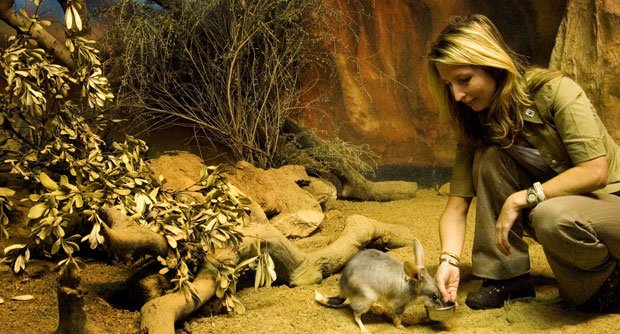Captive breeding a species’ saviour

Captive breeding is emerging as a controversial but crucial stopgap for a growing number of threatened animal species in Australia. The country’s zoos, with their animal husbandry experience and increasing emphasis on conservation, have been developing captive-breeding expertise and now use the strategies to support native species. Some are breed-and-release programs aimed at either boosting flagging numbers in wild populations or beginning new ones.
Since the late 1980s, for example, Perth Zoo has been working with the WA Department of Environment and Conservation and local universities to run breed-and-release programs for a range of very rare endemic WA species including the numbat, Shark Bay mouse, dibbler and the western swamp tortoise. Taronga Zoo, Sydney, also has a history of breeding threatened animals for release, including green and golden bell frogs and stick-nest rats.
Releases from these programs usually only occur where habitat is healthy and threats have been removed or contained. Where this isn’t possible, zoo breeding programs provide a form of protective custody, where numbers are increased but held until conditions in the wild improve.
Captive breeding to help endangered species
Perth Zoo’s recently established amphibian research program is focusing on three threatened frog species. Endemic to south-west WA, they face decline through habitat loss, climate change and potentially the deadly chytrid fungus (AG 81), which is threatening large numbers of amphibians worldwide. Offspring bred from these three species are expected to remain in isolation until a cure is found for chytrid. As an additional backup strategy, cryopreservation techniques are being developed, in which cell lines and sperm will be frozen as a safeguard against future losses.
Taronga Zoo has a captive-breeding program underway for the endangered corroboree frog, and hopes to begin releases in about four years. “Obviously it’s very scary to be [entrusted with] a bunch of animals that are the last of their species,” says Erna Walraven, senior curator for Taronga and Western Plains zoos. “It’s an enormous responsibility and you’d only accept it if you really thought you could make a difference. We are eternally optimistic our efforts will have a great impact on the future. In the meantime all we can do is educate the public and keep those captive populations managed as best we can, both genetically and behaviourally, so we have sound animals to one day put back into the wild when it is safe to do so.”
Captive breeding programs are expensive and Erna acknowledges that zoos hear a lot about how the money would be better spent on habitat protection or threat abatement for wild populations. “But zoos fund these programs mostly out of their own budgets and revenue-raising,” she says. “So they’re not taking away funds from other conservation strategies such as habitat protection.”
Source: Australian Geographic Oct – Dec 2007

